Living Places displayed this summer at the World Capital of Architecture in Copenhagen is containing seven prototypes – five open pavilions and two completed homes – showcasing proposition for healthy low carbon homes and communities.
written by Klaus Hybler
The project aims at demonstrating that it is possible to achieve 3x lower carbon footprint emissions than in an average Danish single-family house at an affordable and attainable level. Living Places Copenhagen is initiated by the VELUX Group, EFFEKT and Artelia. The vision is to lead the way within the building industry and show how rethinking buildings can help solve some of the global climate challenges. The concept is based on five key principles: homes should be healthy, affordable, simple, shared over time and attainable. The building industry, demanders, and architects play a key role in reducing the carbon footprint, regarding the fact the building industry accounts for 34% of the global energy consumption and 37% of the global CO2 emissions.
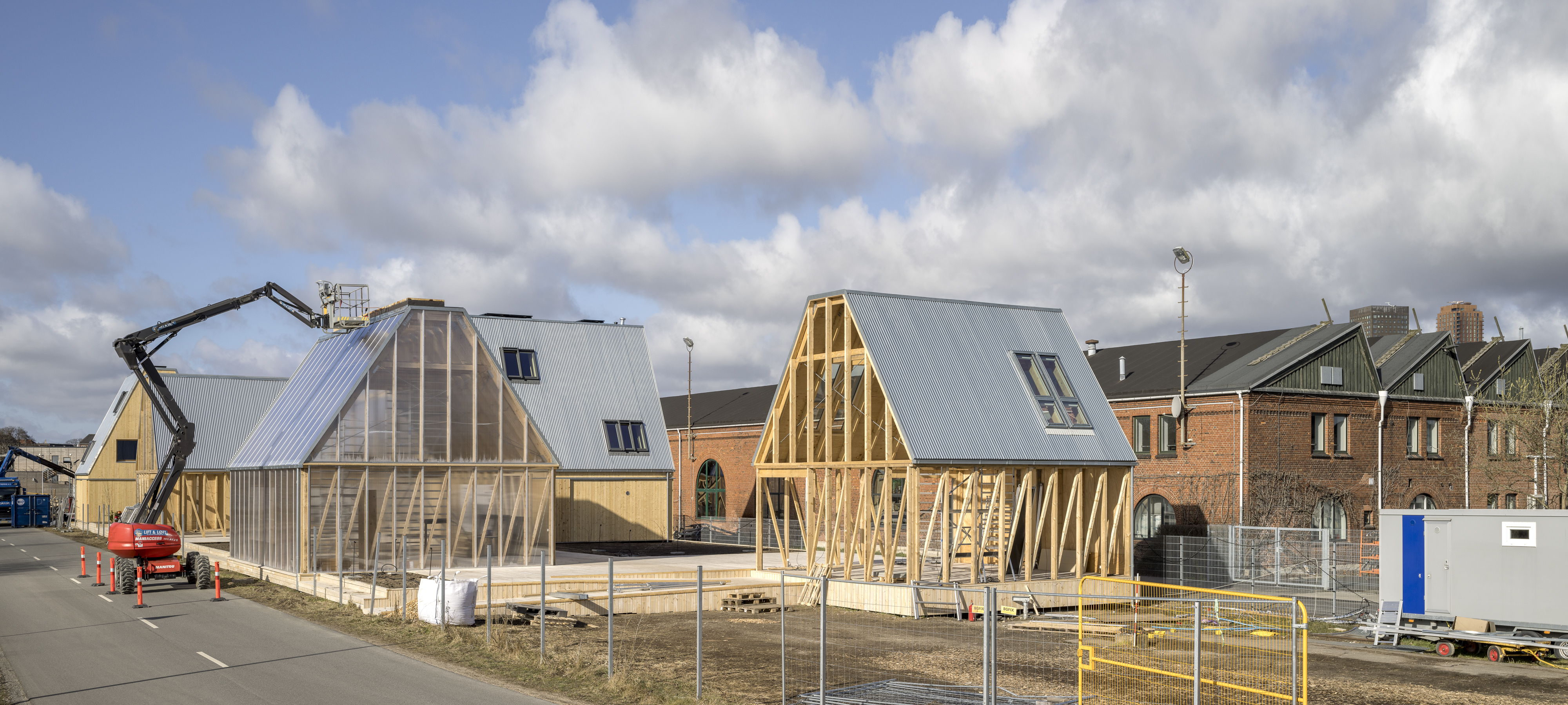
The construction site Living Places Copenhagen displayed at the World Capital of Architecture in Copenhagen.
© Photo EFFEKT
Harpa Birgisdottir, Ph.D. and professor at AAU BUILD, asserts that the necessary materials and technology are currently available to cut global CO2 emissions by about half compared to their current levels. “The buildings sector has just begun to look at the climate impact of the materials used in construction. There is a huge potential in using building materials that reduce the climate burden, which we have not yet fully explored. And the technology is there.” The solution lies in adopting sustainability, our living spaces also necessitate materials that are produced sustainably. It is crucial to ensure that the materials we use are sourced responsibly, with a focus on sustainable production methods. Building sustainably also implies not using unnecessary and too many materials along with flexible solutions for future functions. “There is indeed a solution, but we cannot overlook the importance of modesty. We must use less materials.”
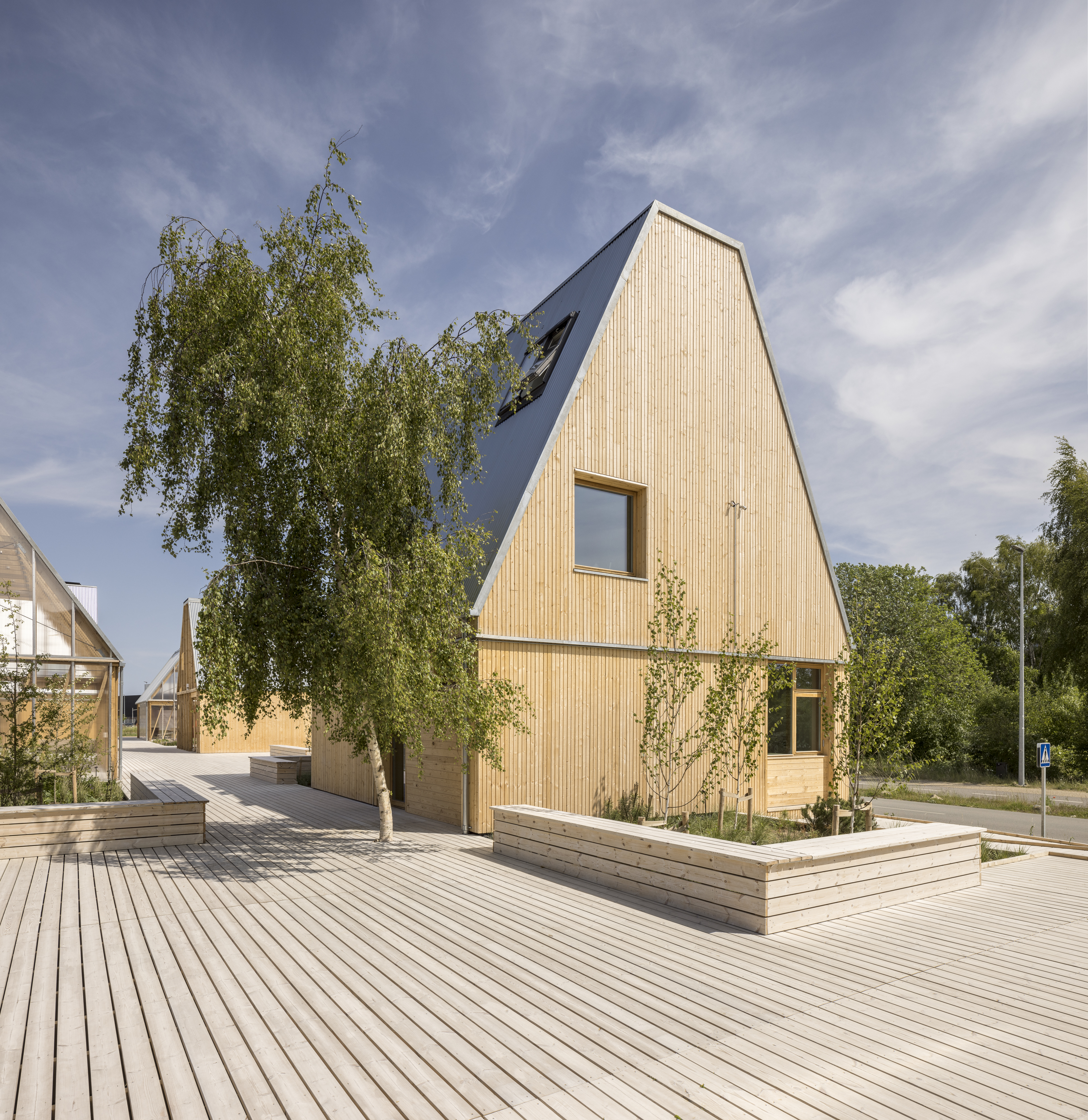
Living Places Copenhagen displayed at the World Capital of Architecture in Copenhagen.
© Photo Adam Monk
Life Cycle Assessment
The Living Places Copenhagen project has carried out a complete Life Cycle Assessment (LCA). This means that each material, design and building technique has been carefully considered and mapped in terms of the CO2 emissions they project compared to a typical Danish household.
After calculating the scenarios, the partnership has created the concept Living Places, which can be built as a single-family home, emitting only 3.8 kg CO2 eq/m2/year with third party verification from AAU BUILD - Department of the Built Environment. A result which is over 3 times lower than the new Danish building legislation demands for 2023; a maximum of 12 kg CO2 /m2/per year (the limit value is not for single family homes). All new constructions with a floor area exceeding 1,000 m2 is limited to a maximum emission of 12 kg CO2 equivalents per m2 per year and starting from 2025 similar emission limits will be applied to all new constructions, regardless of their size. To reduce the CO2 emissions the project replaces heavy building materials such as concrete and bricks with biogenic materials i.e., wood.
“Now we have the building regulation in place in Denmark with defined methodology to calculate the carbon footprint of buildings over their lifetime. And in order to prepare for the legislation, our research at BUILD has been focused on providing data availability and insights into the lifetime carbon emissions of Danish buildings and therefore also single-family houses, “said Harpa Birgisdottir, Ph.D., AAU BUILD.
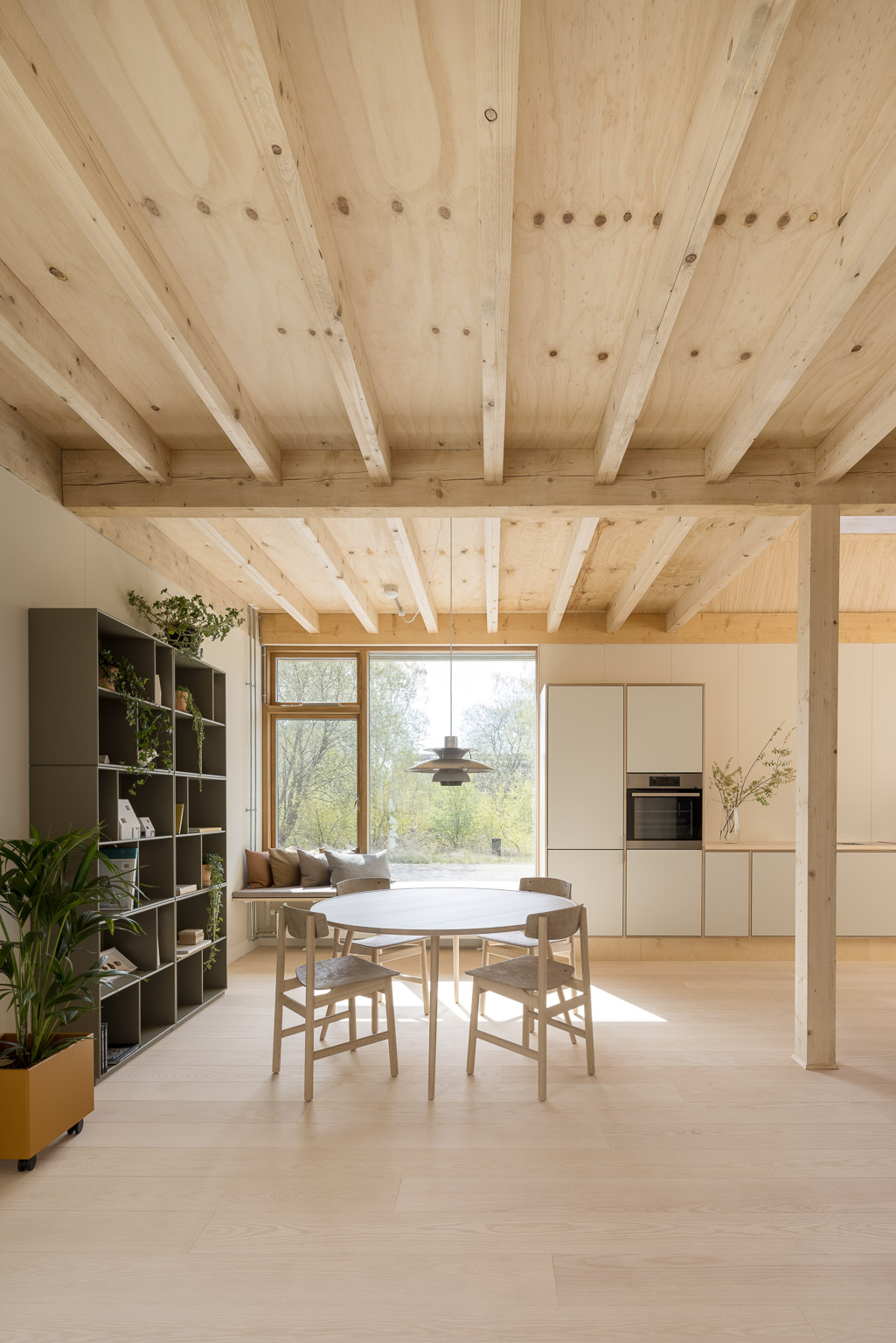
Material ceiling: Pine plywood. © Photo Adam Monk
Modesty in material use and biogenic materials as a key player to lower CO2 emissions
The houses (fully functional homes) featured in the project Living Places Copenhagen are built in timberframe with natural ventilation and wood/wood windows. The ceiling is made of Pine Plywood and the walls consists of Fiber gypsum.
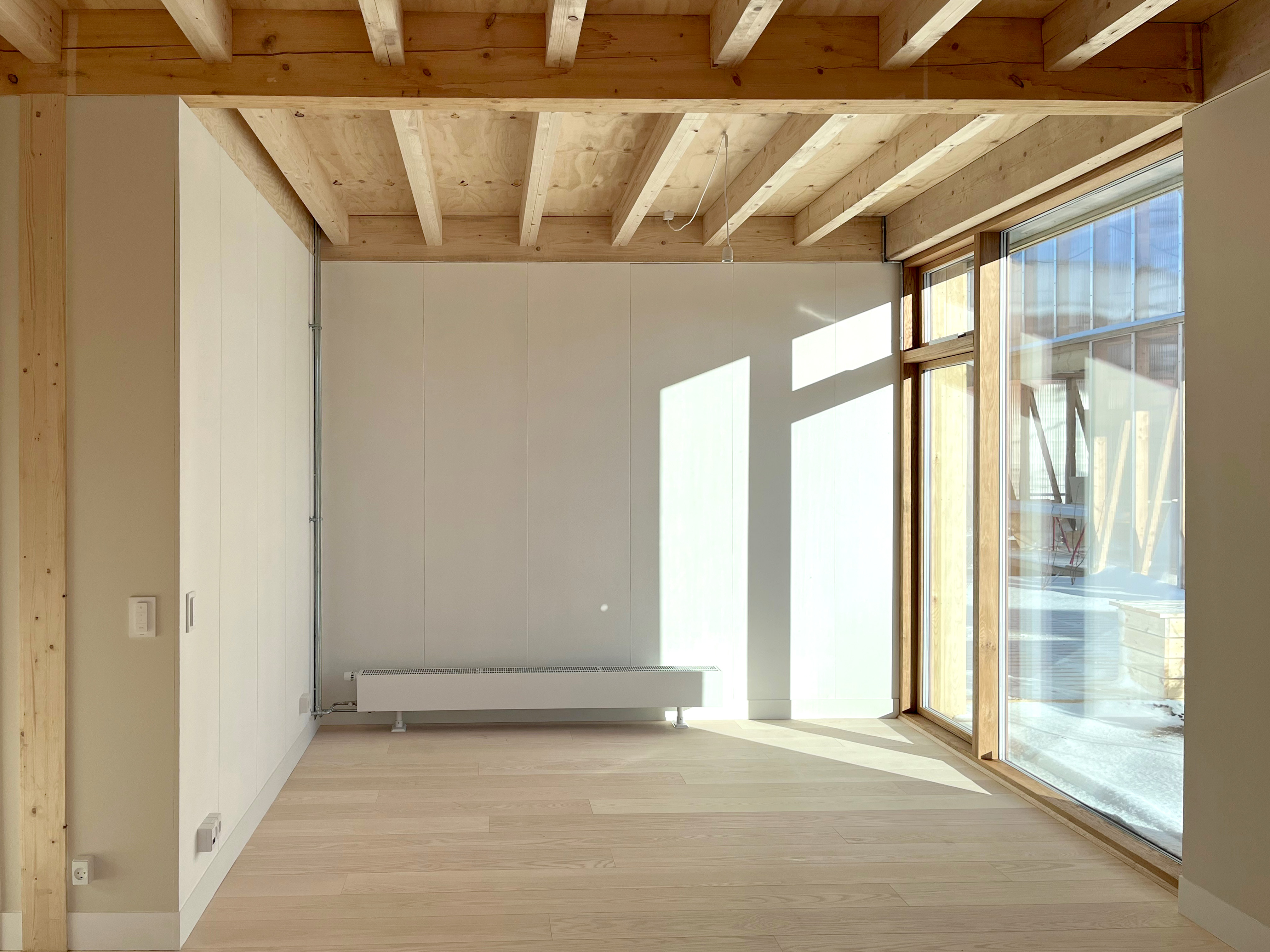
Material walls: Fiber gypsum. © Photo EFFEKT
According to Harpa Birgisdottir little attention has been given to the environmental impact of materials, with the focus being on cost considerations. Therefore, the first step we should take is to prioritize material optimization, avoiding unnecessary excess and ensuring that we use just the right amount. By doing so, we can significantly reduce our carbon footprint and move towards a more sustainable approach to architecture and construction.
“It may sound simple to advocate for the use of bio-based materials exclusively, but what I truly want to emphasize is that optimizing material usage should be our primary concern.”
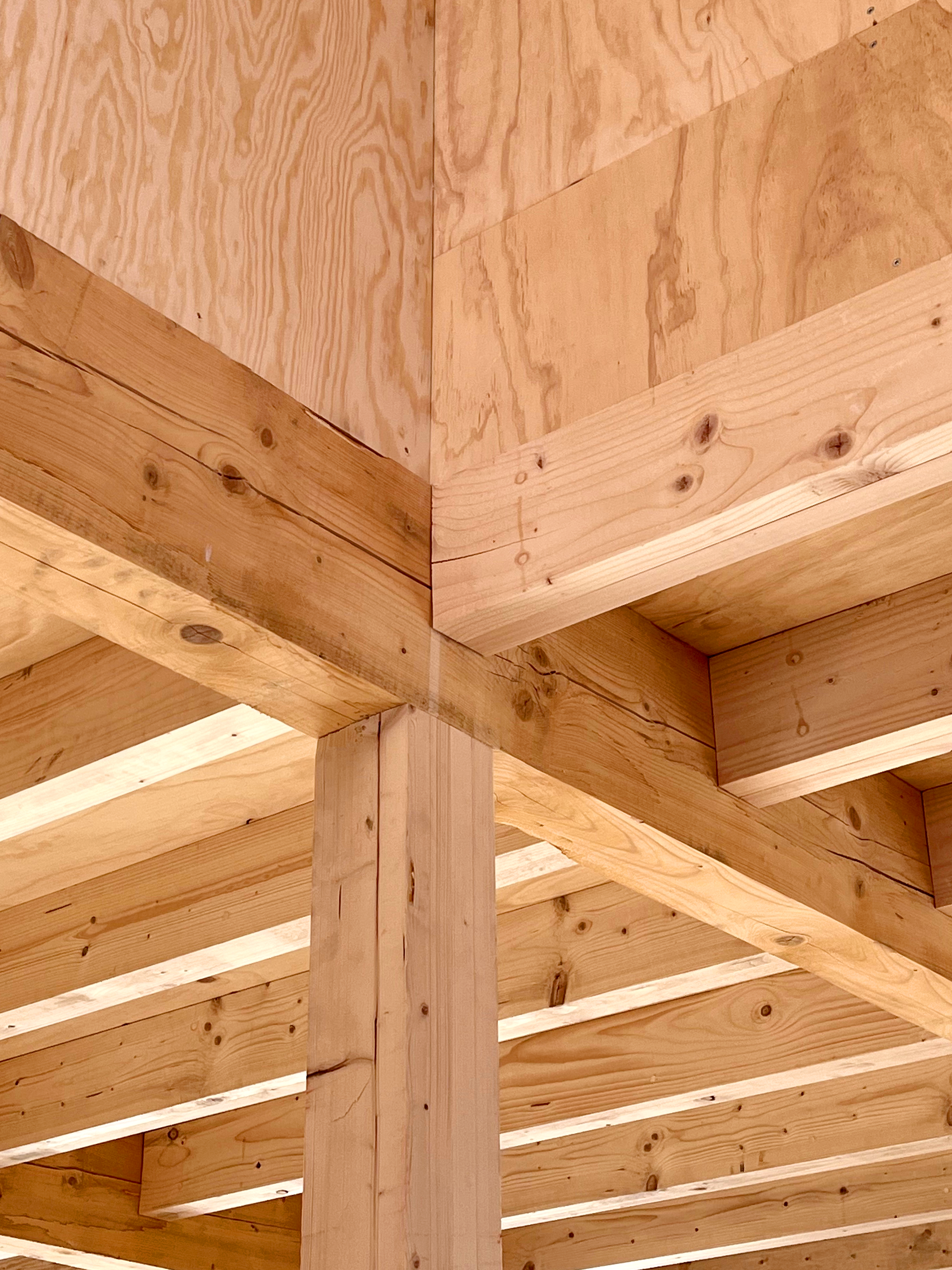
The load bearing timber construction. © Photo EFFEKT
Living Places: Primary conclusions
The analysis highlights immense potential to lower CO2 emissions by exploring geometry, material optimization, and incorporating biogenic materials, along with understanding the distinctions between various materials and market optimization.
A crucial question arises: Will there be a demand among the builders regarding sustainability and will the architects show the willingness to learn how to utilize the available tools for optimization?
Identifying the barriers, two significant obstacles emerge. Firstly, the clients in the whole value chains; the architects, consulting engineers, entrepreneurs etc. needs to demand for sustainable buildings. Secondly, knowledge acts as a barrier, as the complexities can be challenging to navigate.